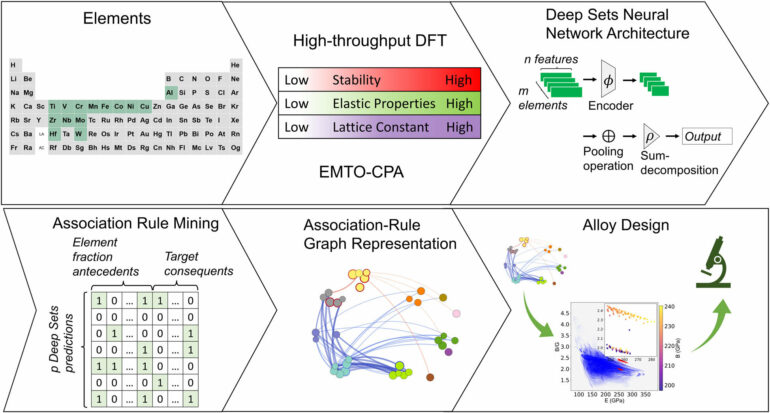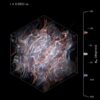A study led by the Department of Energy’s Oak Ridge National Laboratory details how artificial intelligence researchers have created an AI model to help identify new alloys used as shielding for housing fusion applications components in a nuclear fusion reactor. The findings mark a major step towards improving nuclear fusion facilities.
This project began several years ago under former AI Initiative Director David Womble. ORNL AI data scientist Massimiliano Lupo Pasini advocated for it to continue under the initiative’s Artificial Intelligence for Scientific Discovery, or AISD, thrust area. The results of this study are published in the journal Scientific Data.
“These alloys are needed to achieve exceptional performance at very high temperatures, in terms of both resistance to high temperatures and the structural mechanical properties needed to use them in complex nuclear plants,” said Lupo Pasini.
Traditionally, these materials were made using tungsten as the primary element, with additional elements injected as a supplement. This alloy composition proved to be resistant to high temperatures but was inconsistent in maintaining proper shielding.
“Recently, the material science community has explored the opportunity of replacing these standard technology materials with something completely new and disruptive,” said Lupo Pasini.
Identifying potential metallic combinations, however, is a major challenge considering the vast number of possibilities. Guided by AI, researchers can bypass the seemingly endless trial and error period to find viable alloy candidates more efficiently.
Lupo Pasini teamed with German Samolyuk, Jong Youl Choi, Markus Eisenbach, Junqi Yin and Ying Yang and generated the data to create an AI model that identified three elements to test as potential new alloy candidates. Choi, Eisenbach and Yin work in the Computing and Computational Sciences Directorate at ORNL, while Samolyuk and Yang work in the Physical Sciences Directorate.
However, this AI-generated database is only the first half of the project. The data generated will be used by the authors for further research devoted to developing, training, and deploying ML models for materials discovery and design.
“In order to support the design of new refractory high entropy alloys, we need to cover six elements,” Lupo Pasini said. “And also, since the quantum mechanical calculations are very expensive to run on existing supercomputers, the data alone will not be enough.”
Expensive quantum calculations weren’t the only challenge to overcome as the team created the foundation for their AI model, Lupo Pasini said.
“It took a pretty large number of hours both on the Perlmutter and Summit supercomputers to generate the data that we just published to completion,” he said. “The data generation took over a year.”
The Perlmutter supercomputer is located at Lawrence Berkeley National Laboratory, while Summit, part of the Oak Ridge Leadership Computing Facility, is housed at ORNL. Both computing systems are DOE Office of Science user facilities.
The team’s next step is to take this generated data and use it to train the AI model that will accelerate the vast range of compounds that come from mixing the six elements at different concentrations as alloys.
“We are trying to help the material scientists with their trial-and-error approaches in identifying the relative percentage of the different elements that need to be mixed together in order to come up with alloys that can lead to disruptive technological advances in fusion,” Lupo Pasini added.
More information:
Massimiliano Lupo Pasini et al, First-principles data for solid solution niobium-tantalum-vanadium alloys with body-centered-cubic structures, Scientific Data (2024). DOI: 10.1038/s41597-024-03720-3
Provided by
Oak Ridge National Laboratory
Citation:
Researchers build AI model database to find new alloys for nuclear fusion facilities (2024, September 19)



